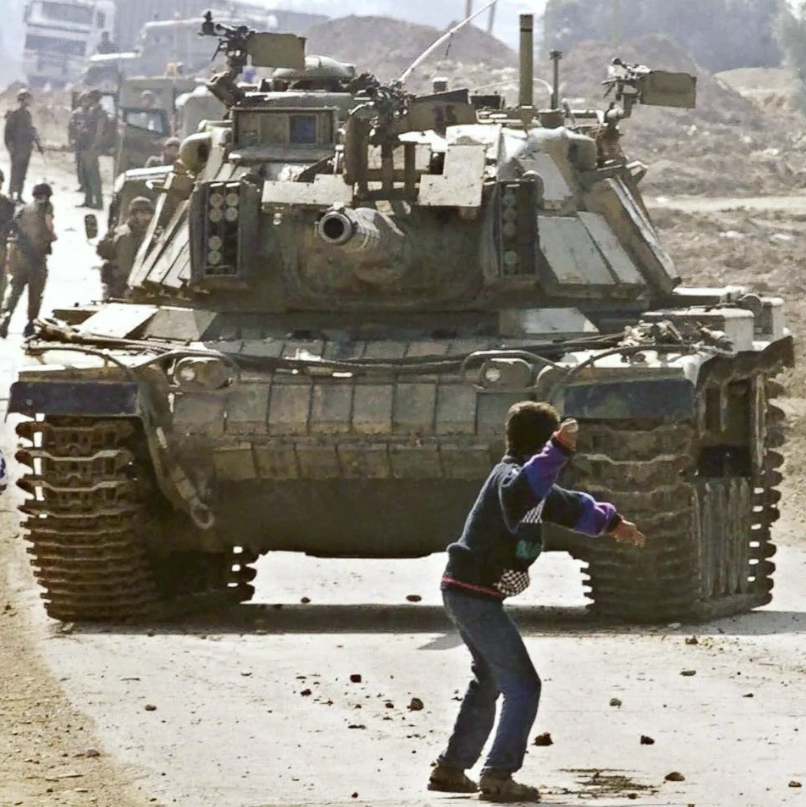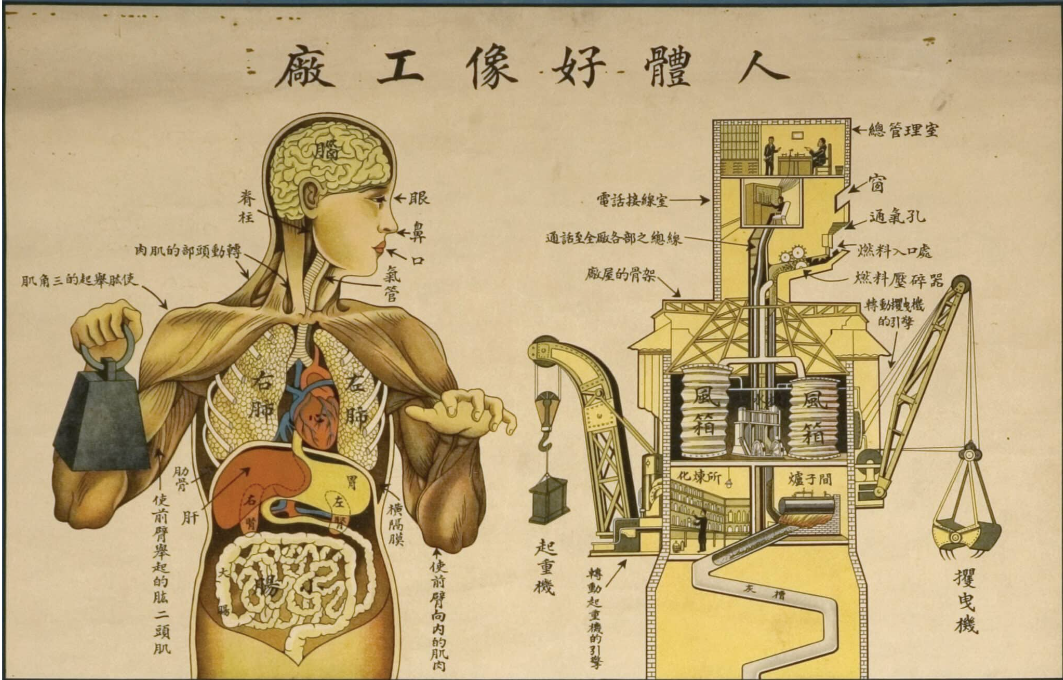Decolonizing Disability
Considerations for using critical disability studies in rehabilitation science

Slated for death or slated for debilitation—both are forms of the racialization of individuals and populations that liberal (disability) rights frameworks, advocating for social accommodation, access, acceptance, pride, and empowerment, are unable to account for, much less disrupt - Jasbir Puar 1
This blog was originally authored by Erin Tichenor, Mica Pabia, and Eduan Breedt as an oral presentation delivered at the University of Alberta, Faculty of Rehabilitation Medicine Symposium 2025.
We want to be clear that what we are sharing is our interpretations of and reflections on the work of scholars such as Jasbir Puar12, Chris Bell3, Lou Tam45, Nirmala Erevelles6, Helen Meekosha7, Rita Giacaman89, Julie Livingston10, Raewyn Connell11, Rachel Gorman121314, Kharnita Mohamed15, Desiree Valentine 1617, Femi Eromosele18, Alison Kafer and Eunjung Kim19 and many others not mentioned here. Our reading of these scholars who write on race, disability, madness, and colonialism, will necessarily be limited by our own positionalities, perspectives, and experiences.
Critical Disability Studies in Rehabilitation Science
Rehabilitation, as a field, has long been ableist, insisting on ‘fixing’ or normalizing disabled people toward European humanist notions of the ‘ideal’ human202122. Critical disability studies intervenes in these issues by affirming disability as a valuable aspect of human diversity, empowering disabled people, and shifting attention away from individual impairments toward the ways that society produces disability through pathologization, discrimination, and inaccessible environments 23. This means that disability is more of a social construct, rather than evidence of inherent pathology or inferiority. For Critical Disability Studies, we don’t necessarily need to ‘fix’ or’ get rid’ of disability, but need access, inclusion, and accommodation - the removal of societal barriers to disabled people’s participation in society and societal institutions.
These are important points and although more rehabilitation scholars ought to incorporate Critical Disability Studies perspectives into their work, we would like to centre some critiques and hesitations of mainstream Critical Disability Studies and activism as offered by racialized disability scholars and those writing about or within the ‘Global South’. Our aim is to synthesize these concerns and invite us all to engage with this work in our own scholarship
Shortcomings of Critical Disability Studies
Helen Meekosha7 highlights that although 80% of the world’s disabled population live in the ‘Global South,’ the majority of critical disability scholarship comes from white academics in the ‘Global North,’ which often privilege Western understandings of disability, impairment, and ableism. She7 challenges Critical Disability Studies’ “universalizing tendencies” and its “lack of geopolitical specificity,” noting that many marginalized people around the world do not necessarily identify or resonate with Western notions of being disabled (p. 681). Furthermore, states and medical institutions might not even count their experiences as disabilities deserving of rights (see also Gunaratnum 202124; Puar 20171). Second, disability rights themselves don’t benefit people equally. For example, Rachel Gorman (2013)13 studied how it’s mostly White students who seek and are granted accommodations in universities. Third, many people do not necessarily want to be included into harmful systems that perpetuate colonial and racial capitalist violence - such as corporations and the military. We’ll unpack these points more as we go.
Racial, colonial violence & disability
If we dig a bit deeper, we start to see that there are fundamental issues with the framing of disability itself and the idea that it can be separated from racism and colonialism. The first issue is that we often hear the phrase that ableism is “like” racism or colonialism - just another form of discrimination or distinct aspect of intersectionality that is simply added on top of race. This misses the ways that racism, colonialism, and ableism have emerged together. Racism has historically constructed racialized people as ‘defective,’ ‘inferior,’ or ‘in need of control’ — these logics deeply inform how disability is conceptualized.1419
The next big issue is how the Western ideas of disability activism can obscure colonial violence and prop up the systems that perpetuate it. As Jasbir Puar1 writes, it is a “function of racial, class, and locational privilege” to focus the social model on issues like exclusionary infrastructure, without including how social systems like war, genocide, forced migration, colonial occupation, labor exploitation, environmental racism, and police brutality both impair and disable people (p. 73). Ironically, even though corporations and colonial states say they promote disability empowerment and inclusion, they are also the ones consistently debilitating people through the violences we just mentioned. Under these conditions, we can’t universally say that disability is just diversity or that disability is a “resource”, not a “restriction,”1 when it often does result from systemic violence and disproportionately affects marginalized populations.
Troubling the dis/ability binary
When we look at all this, the binary between being able-bodied and disabled becomes fuzzier. For one, the idea that we live in an able-bodied-dominated world is perhaps inaccurate, when, as Jasbir Puar reminds, capitalism, racism, imperialism, misogyny, transphobia, etc. impair and disable all of us in different ways - and to vastly different extents. The question then becomes, what forms and experiences of impairment are deemed a disability and for whom can this disability be reclaimed as empowering? For example, who can safely claim disability without being deemed medically inadmissible by Immigration Canada? Do we count “weathering”25 - the slow chronic health effects that come from not having access to grocery stores, drinking water, transportation, or from the daily stressors of poverty and discrimination - as a disability? Furthermore, Puar1 argues that “many bodies might not be hailed as disabled but certainly are not awash in the privileges of being able-bodied either” (p. xx). She goes on to ask “is a young black man without a diagnosed disability living in the United States who is statistically much more likely than most to be imprisoned, shot at by police, or killed by the time of adulthood actually a referent for what it means to be able-bodied?” (p. 74). We commonly hear the phrase “we will all be disabled one day” that disability is something we will all have in common one day - particularly as we age. This obscures the unequal distribution of not only ableism but of violence, injury and ill-health. In fact, as Jasbir Puar1 notes, many marginalized people simply will not live long enough to acquire the disabilities that come with assumed longevity and ageing (p. 85). Next, which disabilities are considered ‘incidental,’ ‘random,’ or ‘unexpected,’ and which - and whose - are precalculated results of living and working under capitalism and colonialism? For example, people who work in mines, oil fields, and sweatshops are simply expected to be exposed to carcinogens and other dangers without getting any disability rights - it’s part of the job110. Or, while congenital anomalies are often considered random, we know that discrimination, poverty, and industrial chemicals cause disproportionate levels of prenatal health complications in Indigenous communities2627. As Yasmin Gunaratnam24 writes, “wide-ranging injuries inflicted by settler colonialism [and so on] are [often] not accorded recognition or rights as debilitating conditions” (p. 1846). Following this, we might have to think more broadly about what the barriers really are to accessing safety, dignity, participation, and well-being. To name one example, might we move beyond universal design in workplaces and also think about access needs in terms of removing police surveillance and mass incarceration, which produce chronic hypervigilance, anxiety, trauma, grief, and financial stress in structurally marginalized communities.
Southern Disability Studies
In response to these shortcomings, some Southern disability scholars are developing frameworks that go beyond the medical and social models, and account for these geopolitical aspects of disability. Their approach also rejects ableism, but it also focuses more on the production of injury, impairment, and distress. In doing so, they acknowledge how some aspects of the medical model may resonate with people more than the social model does. When it comes to pathology, Femi Eromosele18 reminds us that ideas about damage may be the main way for many people to “point out the destruction wrought by racism and colonialism” and may hold more weight than the idea of being included into an empowered disabled community (p. 12-13).
Or take for example the idea that it’s ‘inherently ableist’ or ‘eugenicist’ to refer to disabilities as pathologies or to say that they should be prevented and no longer exist1. But “Israel’s genocide on the Palestinians in Gaza,” as the UN puts it in their 2024 Anatomy of a Genocide report, is producing massive levels of physical injury and psychological distress (see also the International Court of Justice 2024). We need to be able to say that this shouldn’t be happening. We can combat the idea that people who identify as or are deemed as different need to be fixed or excluded. But we cannot address ableism without also acknowledging and challenging these violent systems.
If you are interested in Critical Disability Studies we might encourage you to join us in learning about intersectionalizing the field (and the concept of disability itself), considering the geopolitics of disability, and engaging in ongoing dialogue about this messy and complicated topic alongside the scholars referenced below.
Note
- In the title image is Palestinian Faris Odeh (1985-2000) who was photographed by Laurent Rebours throwing a stone at an Israeli tank in the Gaza Strip during the Second Intifada, 29 October 2000. He was martyred on 8 November 2000 (aged 14) by Israeli soldiers.
- We use ‘North/South’ terminology for brevity but want to note its limitations. Helen Meekosha7 writes that the distinction broadly refers to a “complex of inequalities and dependencies'' where ‘Southern’ countries (sometimes referred to as ‘developing) or ‘Third World’ are “historically conquered or controlled by modern imperial powers, leaving a continuing legacy of poverty, economic exploitation and dependence” (p. 669). Of course, this distinction is not entirely geographic or spatial1. Terms like the Global North or ‘Global center’ include Southern colonial powers like Australia and New Zealand, and even places within the Global South or ‘Global Periphery” that have not been colonized (such as Tonga) still geopolitically and economically hold a “peripheral position in global society, culture and economics” as Meekosha7 notes (p. 669)(see also Empire by Michael Hardt and Antonio Negri28). The ‘North/South’ distinction also operates within these boundaries; for example, we may well use the Global South to refer to communities within rich, Western nations that have been and continue to be disenfranchised, exploited, and neglected (such as reservations, poor black communities, immigrant neighborhoods, etc. As Puar1 writes “The United States displaces its production of debilitation through incarceration and racialization practices both ‘here’ and in the ‘elsewhere,’ temporally as well as spatially, creating objects of un-care—social pariahs” (p. 16). The critiques of EuroAmerican imperialism in this blog, thus extend beyond and within the borders of these nations (see Tichenor 2024)29.
References
-
Puar, Jasbir K. 2017. The Right to Maim: Debility, Capacity, Disability. Durham, NC: Duke University Press. ↩︎
-
Puar, Jasbir K. 2023. “Critical Disability Studies and the Question of Palestine: Toward Decolonizing Disability.” Pp. 117-134 in Crip Genealogies, edited by Mel Y. Chen, Alison Kafer, Eunjug Kim, and Julie Avril Minich. Durham, NC: Duke University Press. https://doi.org/10.1215/9781478023852-005 ↩︎
-
Bell, Chris. 2016. “Is Disability Studies Actually White Disability Studies?” Ch. 28 in The Disability Studies Reader, edited by Lennard J. Davis. 5th ed. New York: Routledge. ↩︎
-
Tam, Louise. 2012. Governing Through Competency: Race, Pathologization, and the Limits of Mental Health Outreach. Master’s thesis, Sociology and Equity Studies in Education, Ontario Institute for Studies in Education, University of Toronto. ↩︎
-
Tam, Louise. 2013. “Whither Indigenizing the Mad Movement? Theorizing the Social Relations of Race and Madness Through Conviviality.” Pp. 281-297 in Mad Matters: A Critical Reader in Canadian Mad Studies, edited by Bren A. LeFrancois, Robert J. Menzies, and Geoffrey Reaume. Toronto, Canada: Canadian Scholars Press. ↩︎
-
Erevelles, Nirmala. 2011. Disability and Difference in Global Contexts: Enabling a Transformative Body Politic. New York: Springer. ↩︎
-
Meekosha, Helen. 2011. “Decolonising Disability: Thinking and Acting Globally.” Disability & Society 26(6):667–82. https://doi.org/10.1080/09687599.2011.602860. ↩︎
-
Giacaman, Rita. 2018. “Reframing Public Health in Wartime: From the Biomedical Model to the ‘Wounds Inside’.” Journal of Palestine Studies 47(2):9–27. https://doi.org/10.1525/jps.2018.47.2.9. ↩︎
-
Giacaman, Rita, Yoke Rabaia,Viet Nguyen-Gillham, Rajaie Batniji, Raija-Leena Punamäki and Derek Summerfield. 2011. “Mental Health, Social Distress and Political Oppression: The Case of the Occupied Palestinian Territory.” Global Public Health 6(5):547-559. https://doi.org/10.1080/17441692.2010.528443. ↩︎
-
Livingston, Julie. 2005. Debility and the Moral Imaginary in Botswana. Bloomington, IN: Indiana University Press. ↩︎
-
Connell, Raewyn. 2011. Southern Bodies and Disability: Re-thinking concepts. Third World Quarterly 32(8):1369–1381. https://doi.org/10.1080/01436597.2011.614799 ↩︎
-
Gorman, Rachel. 2016. “Disablement In and For Itself: Toward a ‘Global’ Idea of Disability.” Somatechnics 6(2):249–261. https://doi.org/10.3366/soma.2016.0194 ↩︎
-
Gorman, Rachel. 2013. “Thinking Through Race, Class, and Mad Identity Politics.” Pp. 269-280 in Mad Matters: A Critical Reader in Canadian Mad Studies, edited by Geoffrey Reaume, Bren A. LeFrancois, and Robert J. Menzies. Toronto, Canada: Canadian Scholars Press. ↩︎
-
Gorman, Rachel, Annu Saini, Louise Tam, Onyinyechukwu Udegbe, and Onar Usar. 2013. “Mad People of Colour: A Manifesto By Rachel Gorman, Annu Saini, Louise Tam, Onyinyechukwu Udegbe & Onar Usar.” Asylum Magazine. Retrieved May 4, 2024 (https://asylummagazine.org/2013/12/mad-people-of-color-a-manifesto-by-rachel-gorman-annu-saini-louise-tam-onyinyechukwu-udegbe-onar-usar/). ↩︎
-
Mohamed, Kharnita. 2023. Protesting death-disability-debility imaginaries: Ontological erasure and the endemic violences of settler colonialism. Thesis. University of the Western Cape. ↩︎
-
Valentine, Desiree. 2021a. “Technologies of Reproduction: Race, Disability, and Neoliberal Eugenics.” The Journal of Philosophy of Disability 1:35-55. ↩︎
-
Valentine, Desiree. 2021b. “Racialized disablement and the need for conceptual analysis of ‘racial health disparities’.” Bioethics 36(3): 336-345 ↩︎
-
Eromosele, Femi. 2020. “Frantz Fanon in the Time of Mad Studies.” World Futures 76(3):167-187. https://doi.org/10.1080/02604027.2020.1730737. ↩︎
-
Kafer, Alison, and Eunjung Kim. 2017. “Disability and the Edges of Intersectionality. Pp. 123-138 in The Cambridge Companion to Literature and Disability. Cambridge Companions to Literature, edited by Clare Barker and Stuart Murray. Cambridge, UK: Cambridge University Press. ↩︎
-
Breedt, Eduan, and Tim Barlott. (2024). Physiotherapy’s necessity for ableism: reifying normal through difference. Disability & Society, 40(5), 1361–1384. https://doi.org/10.1080/09687599.2024.2353075 ↩︎
-
Hammell, Karen W. 2023. A call to resist occupational therapy’s promotion of ableism. Scandinavian journal of occupational therapy, 30(6), 745–757. https://doi.org/10.1080/11038128.2022.2130821 ↩︎
-
Roush, Susan E., and Nancy Sharby. 2011. “Disability Reconsidered: The Paradox of Physical Therapy.” Physical Therapy 91 (12): 1715–1727. https://doi.org/10.2522/ptj.20100389. ↩︎
-
Withers, A.J. 2012. Disability Politics and Theory. Fernwood Publishing. ↩︎
-
Gunaratnam, Yasmin. 2021. “Infrastructures of Racial Violence, Health and Debility.” Sociology of Health and Illness 43(8):1845–1850. https://doi.org/10.1111/1467-9566.13365. ↩︎
-
Geronimus Arline T. 1992. The weathering hypothesis and the health of African-American women and infants: evidence and speculations. Ethnicity & disease, 2(3), 207–221. ↩︎
-
Hoover, E., Cook, K., Plain, R., Sanchez, K., Waghiyi, V., Miller, P., Dufault, R., Sislin, C., & Carpenter, D. O. 2012. Indigenous peoples of North America: environmental exposures and reproductive justice. Environmental health perspectives, 120(12), 1645–1649. https://doi.org/10.1289/ehp.1205422 ↩︎
-
Meltzer, G.Y., Watkins, BX., Vieira, D. et al. A Systematic Review of Environmental Health Outcomes in Selected American Indian and Alaska Native Populations. J. Racial and Ethnic Health Disparities 7, 698–739 (2020). https://doi.org/10.1007/s40615-020-00700-2 ↩︎
-
Hardt, Michael, and Negri, Antonio. 2000. Empire. Harvard University Press. ↩︎
-
Tichenor, Erin. 2024. What does borderline do? An ethology. Thesis. University of Alberta. ↩︎




